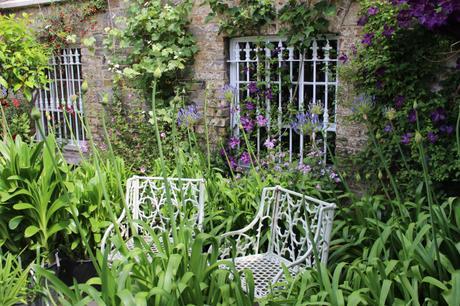
Helen Dillon’s garden in Dublin left me feeling very perplexed. It was one of the two gardens I had been really looking forward to visiting on my tour and I was surprised not to feel thrilled at the visit.
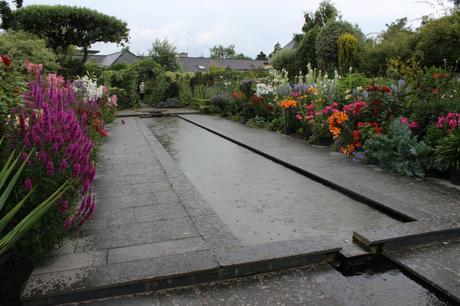
The garden is well-known for its much photographed central pool/rill flanked with herbaceous borders. You enter the garden via the house and find yourself looking down on the garden with the rill and borders filling the view. This area of the garden is obviously designed to be seen from the drawing-room above and I have to agree that it looks wonderful from the window (sorry I didn’t take a photo from the window!)

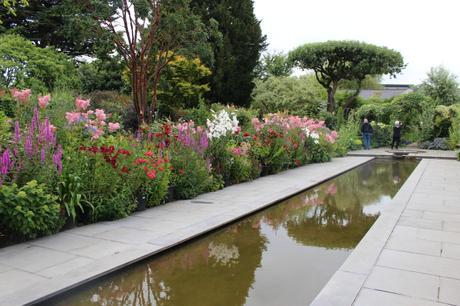
However, when you get down to the garden you notice that the effect is achieved by the placing of pots of plants along the front edge of the borders. This approach really jarred with me and has left me wondering why. There were gaps in the borders where the pots could be placed so you couldn’t see the black plastic so why were they placed in such clear view. Is this me making too much of the sight of black plastic? I don’t think so as others commented on it too. I also found my response to the borders confusing.
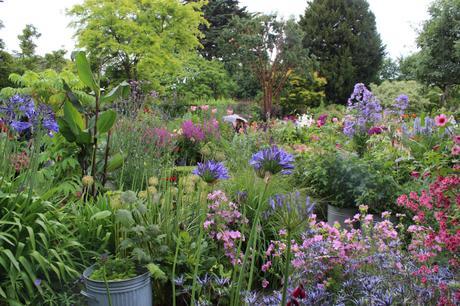
I prefer this view of the garden to the views of the borders above. I am finding that I like the feeling of enclosure; of being amongst the plants as opposed to standing viewing an arrangement. It is something I felt quite strongly at Great Dixter in my response to the long border and the stock beds and I was interested to read James Golden’s recent blog post on Bury Court where he experienced something similar. I have noticed that I like to push through the plants, to run my hand through the flowers as I walk past. I think I chose the top photo as the introductory photo for this blog post as I liked the feel of this seating area, totally enclosed by plants.
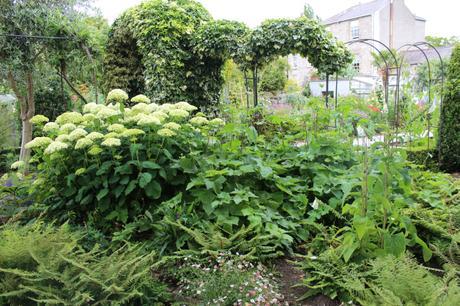
At the far end of the rill you come to a more private area of the garden, an area that I don’t think is featured in books and magazines so much and which was much more to my liking. I enjoyed the combination of foliage; the textures of green in the woodland area. I also like the arches which are being clothed with ivy – an idea I am pondering and wondering if I can reproduce somewhere in my own space.
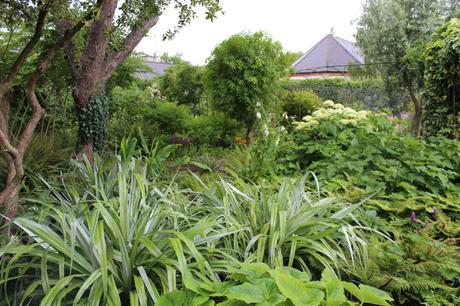
Another view of the woodland area, which I kept going back to so it obviously appealed to something in my psyche. I really liked the Astelias as I have only seen them grown in full sun but here they provide a nice contrast to the other foliage and the silver leaves bring a special glow.
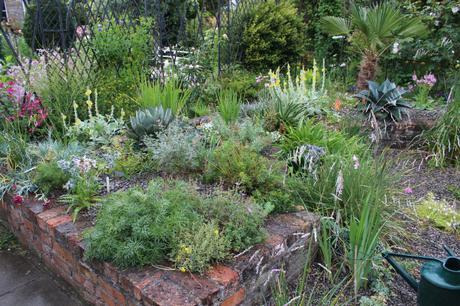
Adjacent to the woodland is a dry garden with a succulents such as the agaves with dieramas and low growing drought tolerant plants. This, and the woodland area, are more a plantsman’s garden than, to my mind, the big borders by the house. Here there are all sorts of treasures acquired by Helen on her travels and from friends.
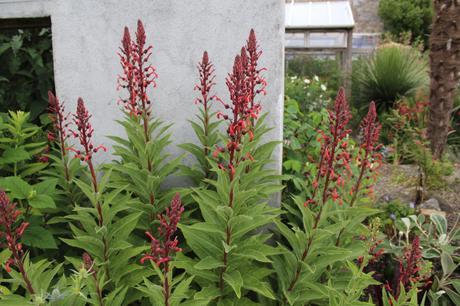
A beautiful Lobelia tupa was shown of very well against the pale end wall of the greenhouse (I think) – a good lesson in placing a plant as the wall shows off the plant but also provides additional heat for this exotic looking creature. My Lobelia tupa has decided it is just too mild to bother this year so I am really missing its fiery red plumes.

My last photo is of the front garden planting. It was a hard space to photograph partly because it was full of our group and secondly because I kept finding the neighbour’s ‘for sale’ sign creeping into the shot. Here again the planting, under a group of birch trees, is much more to my taste than the famed borders. It is relaxed, informal, naturalistic and just as the dry and woodland gardens show Helen’s plantsmanship, this area shows her skill at combining and planting plants. I think this style of planting is harder to do well than the traditional border planting. I am left wondering why then is all the focus on the big borders and rill – but then again it’s probably a matter of taste.
I’m glad I have finally written this post as it has led to me looking back through my photographs of Helen’s garden and realising that there is a lot to learn once I move my mind on from the black plastic pots!

